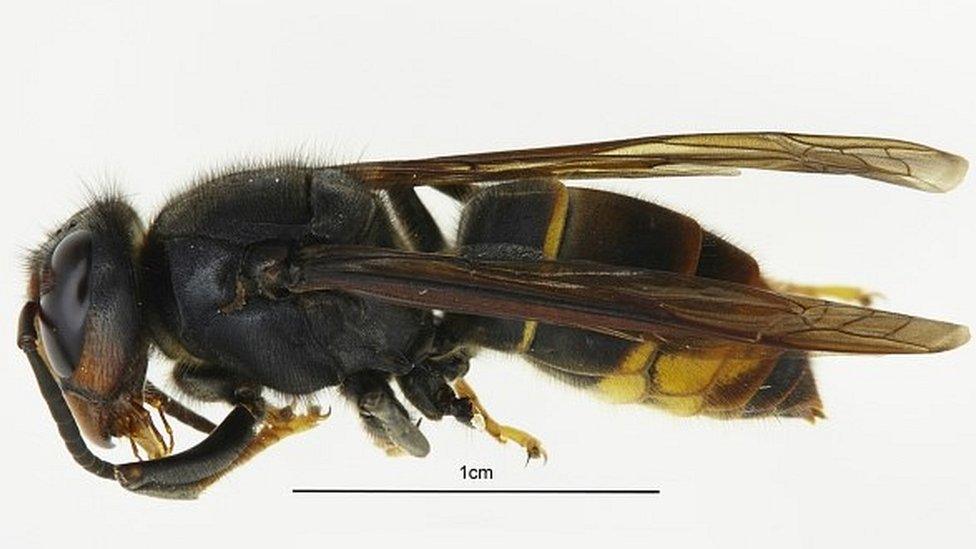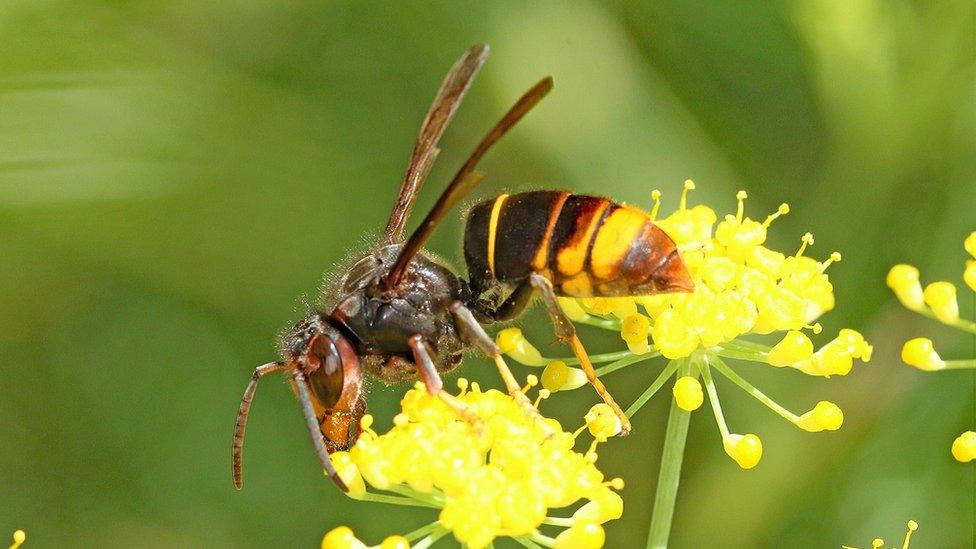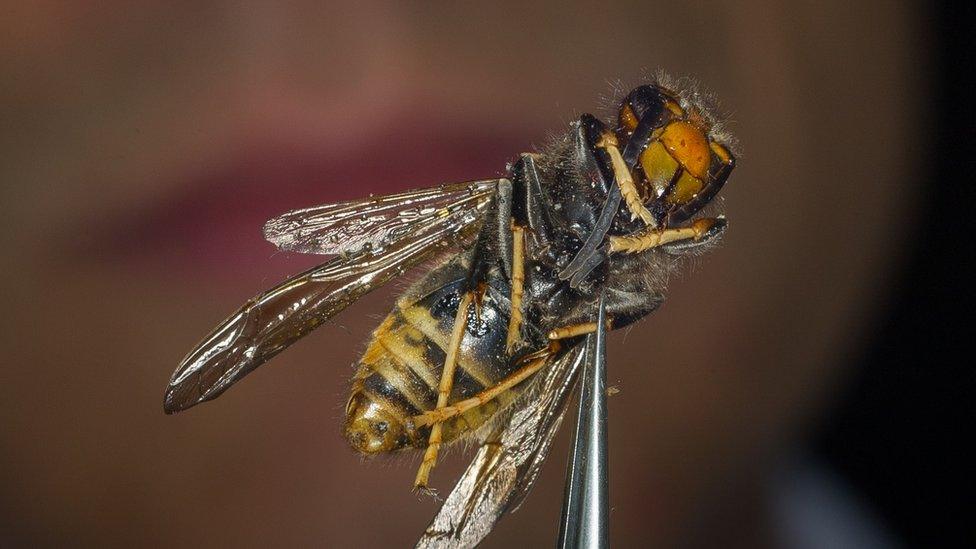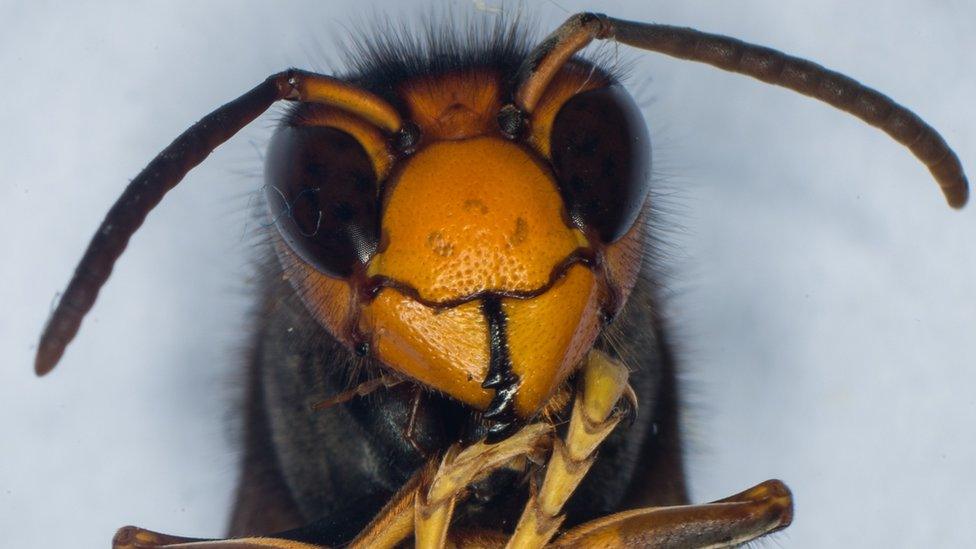Invasive Asian hornet nest removed from tree top
- Published

Asian hornets prey on pollinating insects such as honey bees and could do serious damage to colonies in the UK, which have not evolved to cope with the threat
A large nest of invasive hornets - which kill honey bees - has been removed and destroyed.
Last month a single Asian hornet was found near Tetbury, Gloucestershire - the first time the species had been seen in Britain.
Since then a nest was found nearby at the top of a 55ft (16.8m) conifer tree.
A spokesman for the Animal and Plant Health Agency said no more live sightings had been made in the area after the nest was removed.
The Department for Environment, Food and Rural Affairs (Defra) had previously set up a three-mile (5km) surveillance zone following the original find.
It said it had been anticipating the hornets' arrival "for some years" and had a "well-established protocol in place to eradicate them".

Defra said while the hornets pose a greater risk to human health than a bee it recognised the damage it could do to honey bee colonies.
The Asian hornet is now common across Europe after being accidentally introduced to France in 2004 in a shipment of pottery from China.
In the summer, the non-native species was discovered in the Channel Islands of Jersey and Alderney for the first time.

Identifying an Asian hornet
Vespa velutina queens are up to 3cm (1.2in) in length; workers up to 2.5cm (1in)
Entirely dark brown or black velvety body, bordered with a fine yellow band
Only one band on the abdomen: fourth abdominal segment almost entirely yellow/orange
Legs brown with yellow ends
Head black with an orange-yellow face
Source: National Bee Unit

- Published17 August 2016

- Published22 July 2016

- Published21 May 2016

- Published10 October 2014
